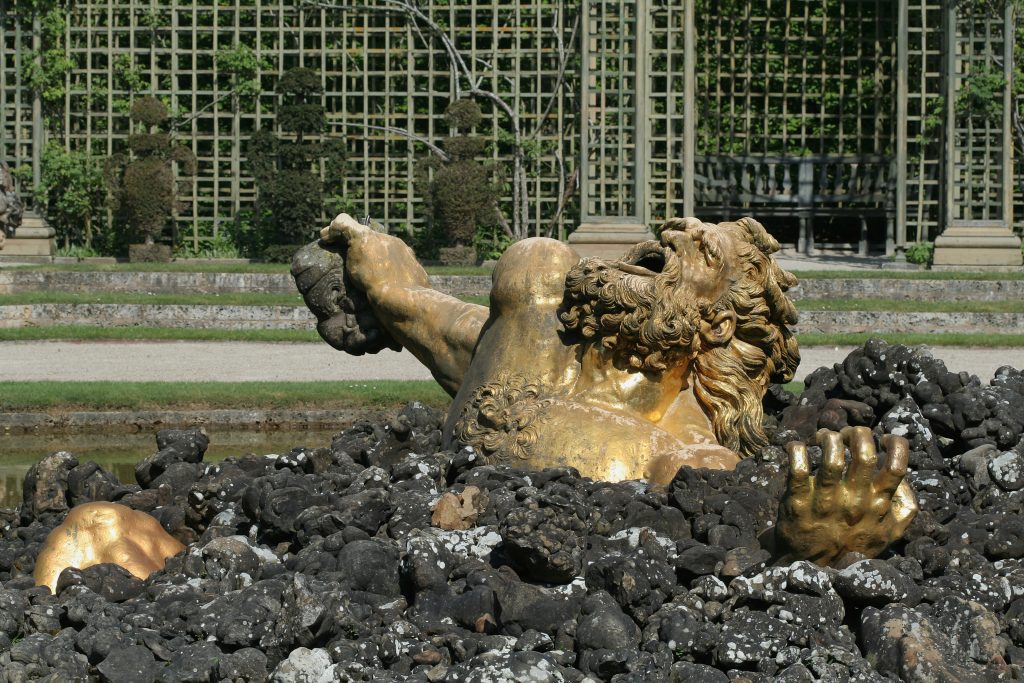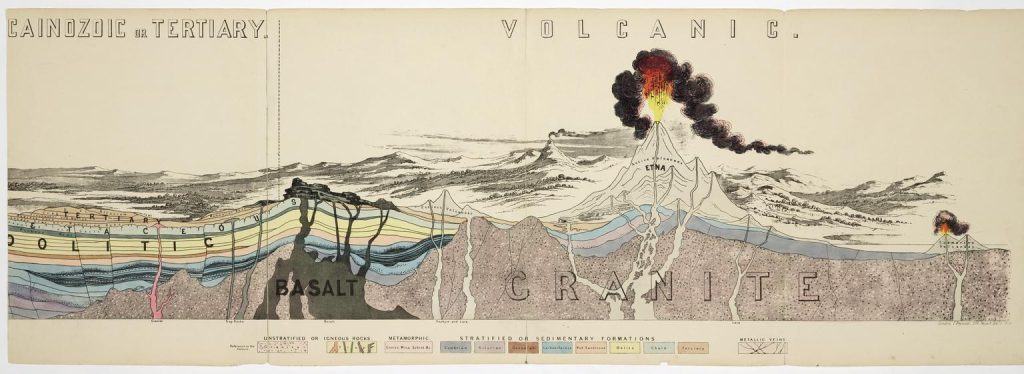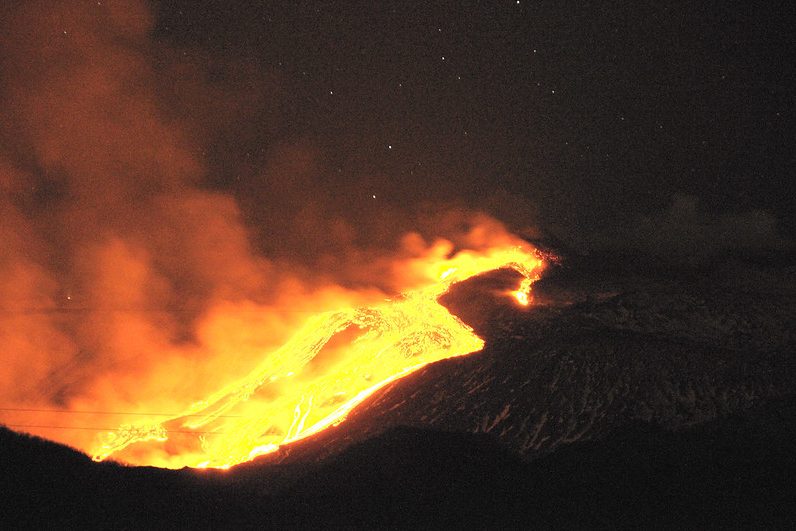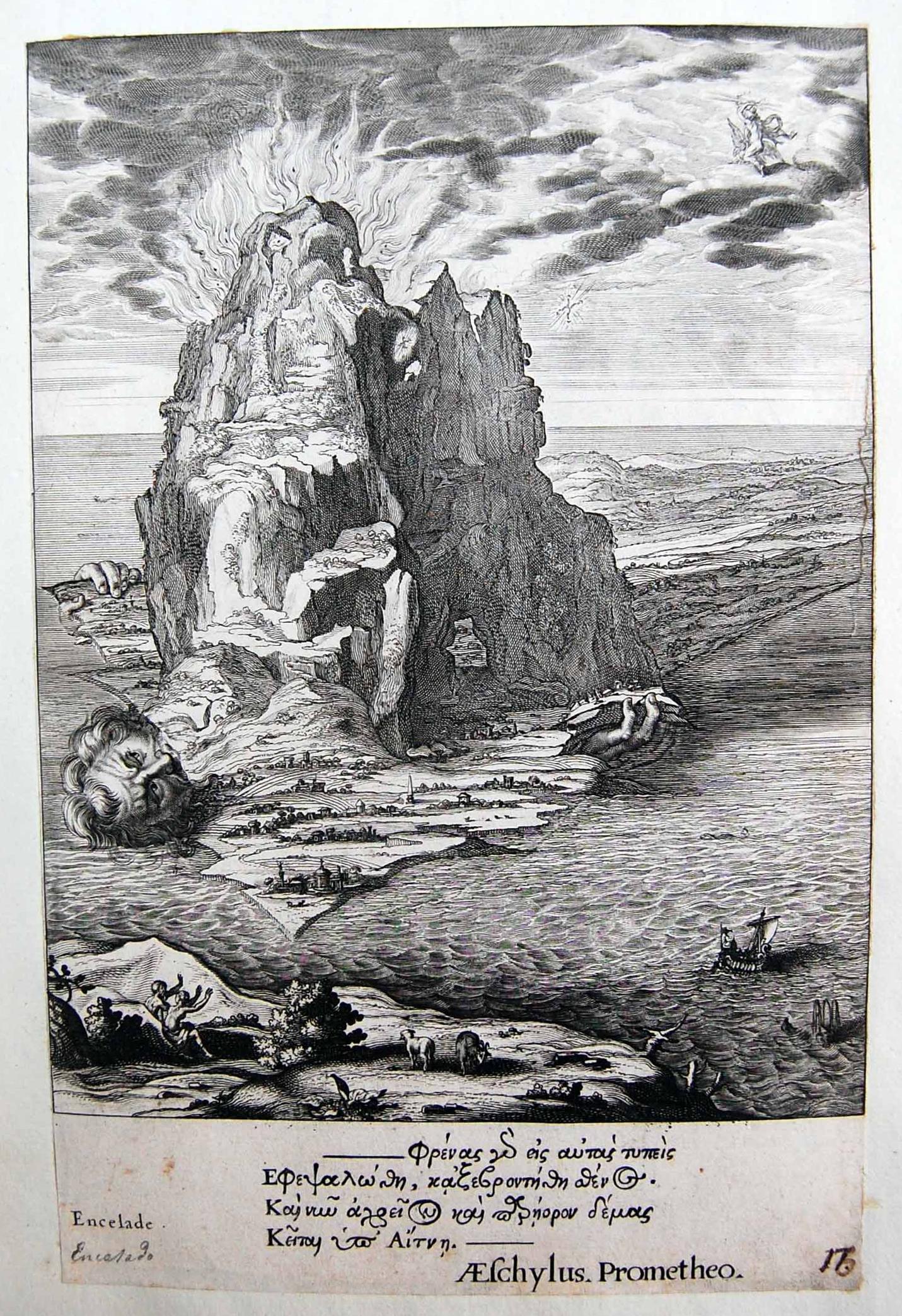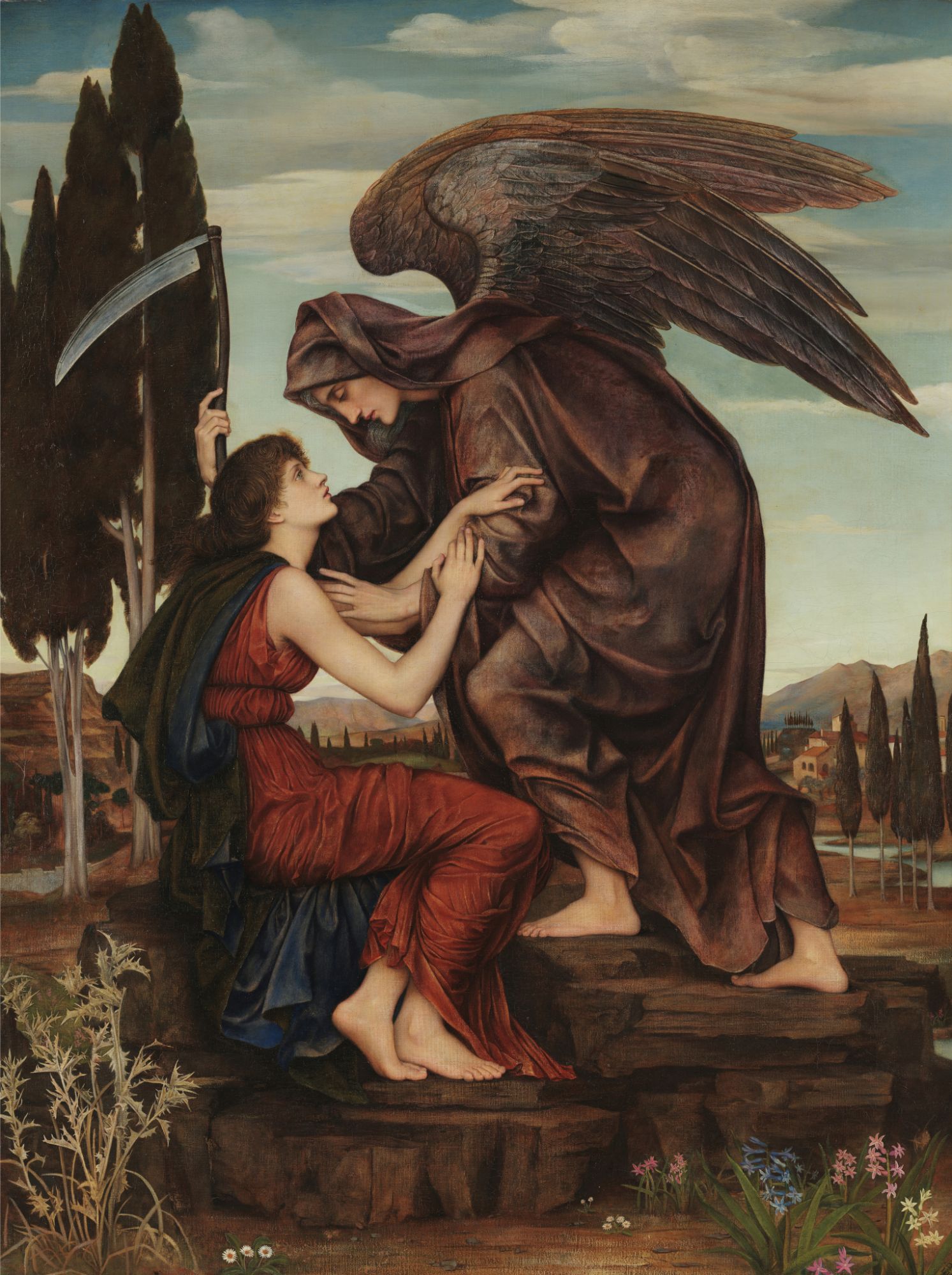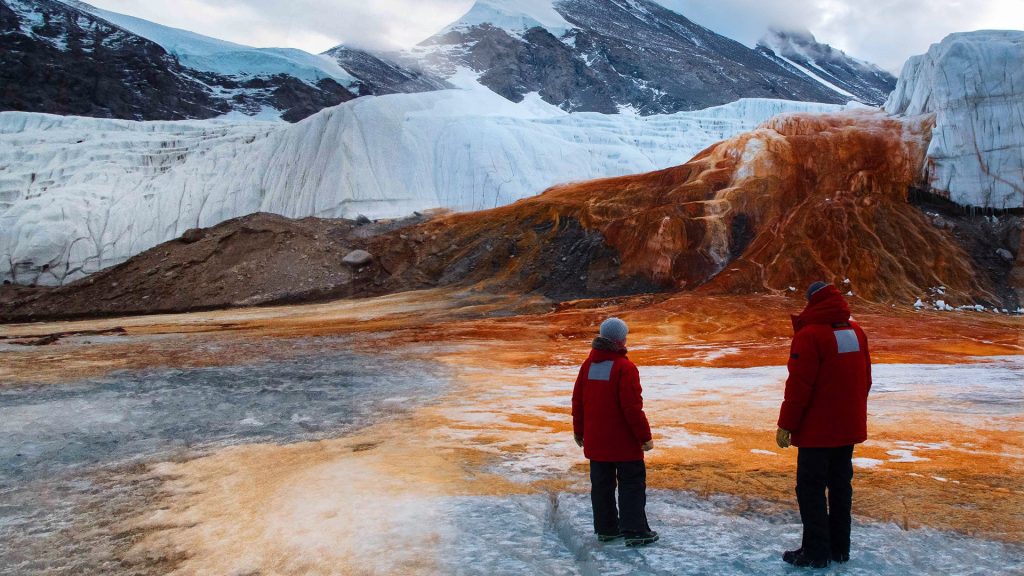| Creator | Painted by Abraham van Diepenbeeck (1596-1675) and engraved by Cornelis Bloemaert (1603-1692) background engraved by Theodor Matham (1605-1676) |
| Media Form | Printed image on paper |
| Genre | Mythological Scene |
| Technique | Painting, engraved for printing |
| Date and Location of Creation | 1635-1638 in Paris |
| Publication Information | A plate in the book Tableaux du Temple des Muses (to accompany commentary by Michel de Marolles) published in Paris by Nicolas Langlois in 1655 |
| Natural Phenomenon Represented | Volcanic Eruption |
A tale from the Gigantomachy of Greek Mythology is represented in this print of a painting by Abraham van Diepenbeeck. What you see is the giant Enceladus trapped under the island of Sicily. Enceladus is one of a race of giants that battled the Olympians with the help of their mother, the earth.
But Earth, vexed on account of the Titans, brought forth the giants, whom she had by Sky.1 These were matchless in the bulk of their bodies and invincible in their might; terrible of aspect did they appear, with long locks drooping from their head and chin, and with the scales of dragons for feet.2
Apollod. 1.6.1
The godess Athena is the Olympian who defeated Enceladus
Enceladus fled, but Athena threw on him in his flight the island of Sicily3; and she flayed Pallas and used his skin to shield her own body in the fight.4
Apollod. 1.6.2
I learned about this story while listening to my son’s favorite podcast, Greeking Out, and immediately thought it would make the perfect illustration of mythological stories emerging to explain natural phenomena. In this case, the eruption of Mount Etna in Sicily was explained by ancient Greeks as the breath of Enceladus. Before geological science helped us understand that volcanoes occur when the earth’s crust ruptures and allows for the escape of lava from deep below the surface, how else could humans make sense of this bizarre occurrence? Let’s consider the logic one might follow: There is lava spewing from the earth! Maybe there is something powerful underneath the earth, trying to get out. But how could something that powerful be trapped? Well, there must be another being slightly more powerful that put it there. There must have been a great battle and this is the result. This is a human mind using things it finds familiar to make sense of something inexplicable, a trend we will be exploring this semester.
When I read mythological stories (Enceladus and many others), I think about the oral tradition of storytelling in which these stories first emerged and wonder: Who was the first human to think of that story? We won’t learn the answer to that question in many cases; we have fragments of versions of the stories written down after they’d been told countless times with variation according to the storyteller and their priorities. But I still speculate: Was the first teller a mother explaining the world to her children? A ruler attempting to control their people? How does that story shape our view of the world and our place in it? How did storytellers use this myth to their advantage?
I also think it’s interesting to look at versions of the story of Enceladus (and many others offering explanations for natural phenomena) alongside geographical diagrams from the early twentieth century, and even images from photographers who get dangerously close to erupting volcanoes to capture their power. To kickstart our discussion, I’ve included additional representations of Mount Etna below, beginning with one more fascinating representation of Enceladus trapped beneath Mount Etna.
